The vibe at this year's NAB will resonate even more than usual through an industry labouring under the strain of the first recession of the 21st century. One of the year's most important trade shows, NAB always acts as an industry barometer. It's inevitable the financial crisis will be a dominant theme at the show, with numbers predicted to be well down on the 27,000 overseas visitors who went to Las Vegas last year. Even at this late stage, flights and (heavily discounted) hotel rooms are still available.
“We sent about 20 people over last year. This year, it's more likely to be about five,” says CTV chief operating officer Barry Johnstone.
Attendance is in question, several high-profile companies have pulled out, and the wisdom of the global trade show is under intense scrutiny. “It's a big spend to fly to Vegas to see your resellers from Soho,” declares Lipsync head of post Kevin Phelan.
With fewer people clocking up airmiles to Las Vegas this year, the show will have a smaller carbon footprint, which ties in with one of NAB's key themes - the environment. The show has put a lot of effort into trumpeting its green credentials. Lanyards are recycled and badge holders are biodegradable. There's an emphasis on electronic, rather than printed, marketing materials. NAB has teamed with the Carbon Fund to put a figure on each visitor's carbon footprint. Based on projected attendance, this works out to $13.25 per head.
According to NAB: “If each parti-cipant buys $13.25 of carbon offsets from Carbonfund.org, [NAB] will be carbon neutral.” However, this is voluntary not mandatory, which will probably dilute its effectiveness.
To date, vendors have been slow to pick up on the green agenda. But that could change, thanks to advantages such as lower power consumption leading to reduced running costs of kit - an attractive feature of any technology in cost-conscious times and one that vendors will be promoting at NAB.
On the wider technology front, stereo 3D will be everywhere as manufacturers try and claim it as their own. The Foundry chief executive Simon Robinson says: “We saw 3D a lot last year, but technology companies were only just wising up to the new world of stereo production, post and exhibition. This is likely to be the year where everyone else comes out of the woodwork.”
It'll be interesting to see how this pans out. Stereo 3D makes a lot of noise for not much signal: projects are invariably high profile and make a big impact, but volumes are still small.
Around 40 3D [feature] releases are slated for 2009/10, but even if the appearance of off-the-radar titles double that figure, there's a question as to how many manufacturers will succeed in the market with the indu-stry still waiting for domestic 3DTV.
Economic and efficient
There's a shift toward television pro-duction that uses mid-range equip-ment, says Andy King, principle technologist at the BBC Digital Media Initiative. The ‘hero suite' is becoming increasingly archaic.
Robinson agrees: “There's a general trend of cost-consciousness pervading the current business environment. So at NAB 2009, I think we'll see more companies pointing out how things can now be done faster and cheaper.”
Post has a wish-list too. Digital Vision president and chief operating officer Simon Cuff calls for reliable, cost-effective shared storage and an agreed industry-standard replacement for old Sony Grade 1 CRT monitors.
King says being able to pass meta-data up and down the chain is increas-ingly important. “The vendor that can sort out codec integration into craft platforms will do very well,” he adds.
There's been a significant boost for 4k production: US cinema chain AMC has entered into a $315m deal with Sony to kit out theatres with 4k pro-jectors. Elsewhere, 3Gigabit capability looks set to be a major feature for equipment such as routers, test and measurement kit, and ‘glue' products.
“With the migration of HD capture and productions edging towards 1080p, we'll be monitoring the progress of kit to handle this format,” says Steve Hathaway, managing director of broadcast technology supplier Oxygen DCT.
He thinks this will segment the HD business into 4:2:2 and 4:4:4 and thus ‘de-converge' digital film and broadcast markets. Capture and post costs are higher for 1080p, so it will be interesting to track its uptake in the current financial climate.
The transition to tapeless is well underway, so the camera sector looks set for a relatively quiet NAB - evolution rather than revolution.
Mark Bainbridge, general manager, media sales at Sony Professional UK, says: “We expect many customers to continue their ongoing migration to file-based workflow and lower-cost HD production as they seek faster workflow and higher-quality content delivery across multiple platforms.”
Red, whose forthcoming Scarlet and Epic cameras have been the biggest news of late, is not even going to exhibit. “Our focus is on getting our new products built, badged and out the door,” says Red's Ted Schilowitz.
So is NAB still relevant? “I think it is relevant. I think it is oversized, but that is typical of anything in the US,” says Marc Irwin, Panasonic UK marketing mana-ger, who is not going this year. “It'll be interesting to see how it affects IBC this year - more visitors to IBC because fewer Europeans made the trip to Vegas or fewer visitors to IBC because nothing new will happen in Amsterdam?”
Certainly the UK's own Broadcast Video Expo (BVE) was a more upbeat event than many predicted. “Recent events such BVE indicate this industry is more robust and resistant. We are looking forward to - hopefully - confirming this trend at NAB,” says Tektronix's Winfried Schultz. The upshot is that regional shows seem to be inching back into importance.
Despite this, those manufac-turers booked for NAB remain optimistic. “Our customers have precious little time available and need to see what they can at one event, not different products at different times in different locations,” says Cintel business development manager Simon Clark.
And there's always the chance that the gamble of attending will pay out. Digital Vision's Cuff closed unplanned deals on the floor of the last three shows. “If we do the same this year, the show will have paid for itself.”
NEW IN VEGAS
PICKS FROM THIS YEAR'S NAB
Manufacturers are playing their cards closer to their chest than ever this year, with even fewer high-profile advance announcements than normal. One area where there has been some activity is in tapeless field recording. S.two has launched the intriguing OB-1, a 2.5kg low-power, onboard recorder using removable solid-state magazines that will work with all digital cinema-tography cameras up to 4k.
Sony has a new field recorder, the PDW-HR, which has been designed primarily as an ENG/EFP complement for the XDCAM HD422 optical camcorder range, but also can record in 24p to support CineAlta production. Codex is highlighting the complete portable recording and dailies transfer system possible with its field-based and tapeless Codex Portable and Transfer Station combo.
Some interesting new products have broken cover on the post front, such as Digital Vision's new Turbine render engine, which promises a 10x increase in speed for colour correction tasks. Cintel is celebra-ting a record quarter for its Ditto film scanner with a modular, fully upgradeable version, dubbed Evolution. The Foundry and Autodesk are among those to have announced new version software releases for the show.
Elsewhere, Pixel Power is debuting Brand Master, which it describes as the world's first branding switcher to integrate a complete master control switcher with broadcast graphics for channel branding.
Xytech is launching Media Pulse, an application suite for asset and resource-based media workflows that offers an end-to-end system extending from initial request through to delivery and billing.
Omneon has added graphics and audio processing for its new Media Deck GX automation agnostic playout system, while BAL's Floormaster is a new, personal and handily wireless quad split multiviewer for studios. I-Movix is unveiling its Sprint Cam V3 HD, an HD native ultra slo-mo system that operates in the 500 to 1,000 frames-per-second bracket.


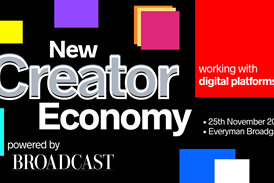
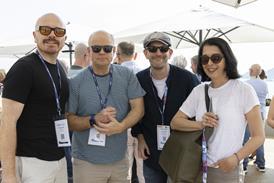
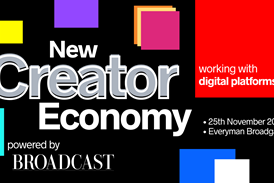





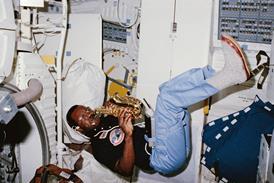
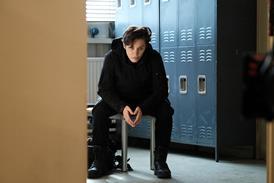


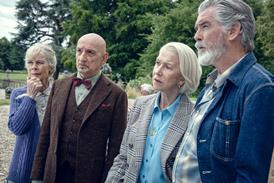











No comments yet